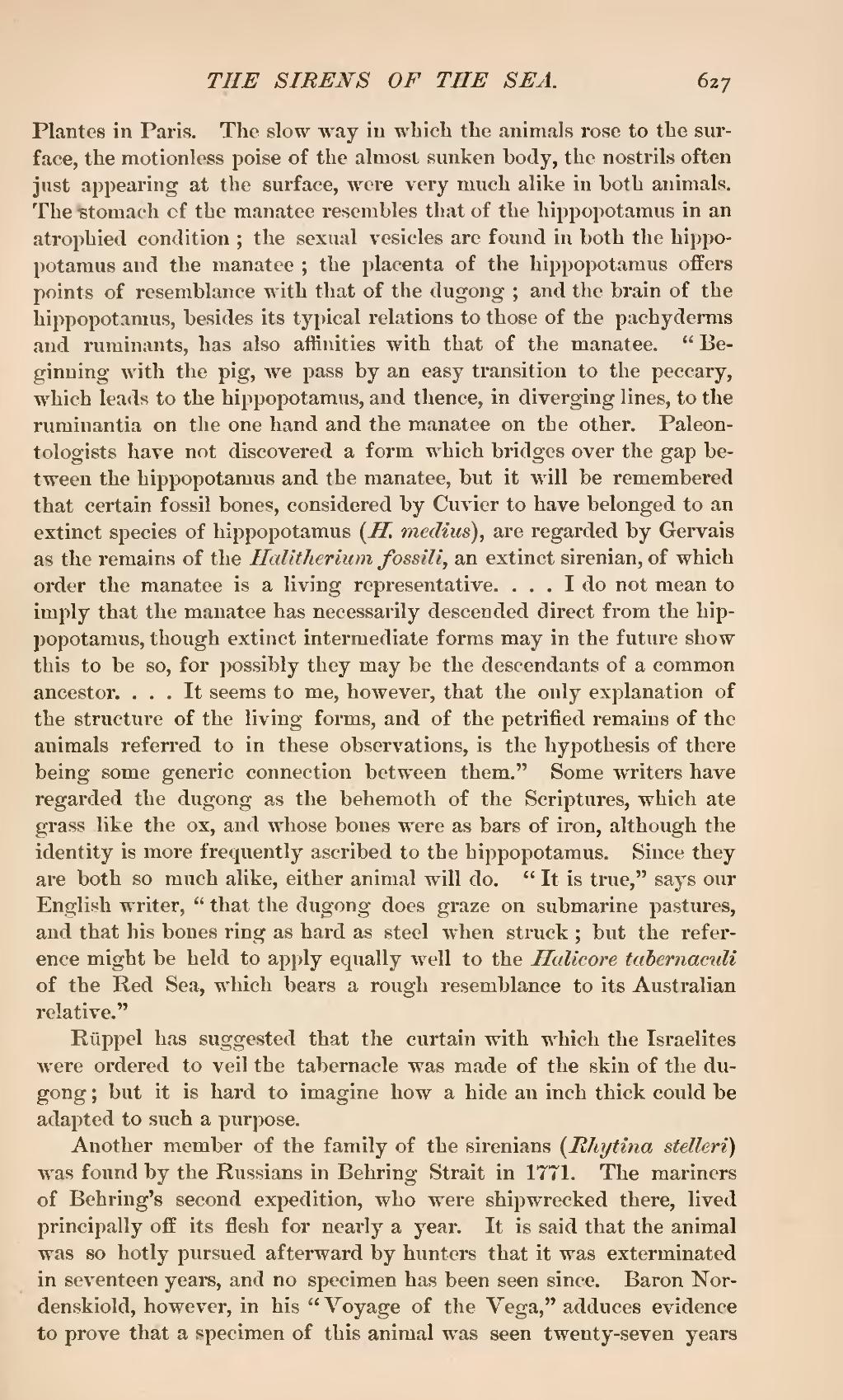Plantes in Paris. The slow way in which the animals rose to the surface, the motionless poise of the almost sunken body, the nostrils often just appearing at the surface, were very much alike in both animals. The stomach cf the manatee resembles that of the hippopotamus in an atrophied condition; the sexual vesicles are found in both the hippopotamus and the manatee; the placenta of the hippopotamus offers points of resemblance with that of the dugong; and the brain of the hippopotamus, besides its typical relations to those of the pachyderms and ruminants, has also affinities with that of the manatee. "Beginning with the pig, we pass by an easy transition to the peccary, which leads to the hippopotamus, and thence, in diverging lines, to the ruminantia on the one hand and the manatee on the other. Paleontologists have not discovered a form which bridges over the gap between the hippopotamus and the manatee, but it will be remembered that certain fossil bones, considered by Cuvier to have belonged to an extinct species of hippopotamus (H. medius), are regarded by Gervais as the remains of the Halitherium fossili, an extinct sirenian, of which order the manatee is a living representative. . . . I do not mean to imply that the manatee has necessarily descended direct from the hippopotamus, though extinct intermediate forms may in the future show this to be so, for possibly they may be the descendants of a common ancestor. . . . It seems to me, however, that the only explanation of the structure of the living forms, and of the petrified remains of the animals referred to in these observations, is the hypothesis of there being some generic connection between them." Some writers have regarded the dugong as the behemoth of the Scriptures, which ate grass like the ox, and whose bones were as bars of iron, although the identity is more frequently ascribed to the hippopotamus. Since they are both so much alike, either animal will do. "It is true," says our English writer, "that the dugong does graze on submarine pastures, and that his bones ring as hard as steel when struck; but the reference might be held to apply equally well to the Halicore tabernaculi of the Red Sea, which bears a rough resemblance to its Australian relative."
Rüppel has suggested that the curtain with which the Israelites were ordered to veil the tabernacle was made of the skin of the dugong; but it is hard to imagine how a hide an inch thick could be adapted to such a purpose.
Another member of the family of the sirenians (Rhytina stelleri) was found by the Russians in Behring Strait in 1771. The mariners of Behring's second expedition, who were shipwrecked there, lived principally off its flesh for nearly a year. It is said that the animal was so hotly pursued afterward by hunters that it was exterminated in seventeen years, and no specimen has been seen since. Baron Nordenskiold, however, in his "Voyage of the Vega," adduces evidence to prove that a specimen of this animal was seen twenty-seven years
